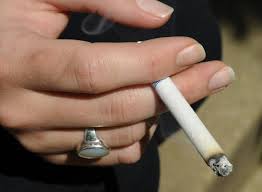Reducing calories units

Reducing calories units in foods and drinks for better health
Reducing calories units in foods and drinks: How to go about it?
When planning a vacation, food, and drinks from one of the key elements for consideration. Good planning for this single element alone will be enough in reducing calories units thereby keeping a healthy weight. Doctor Dalal Akoury, MD, and founder of AWAREmed Health and Wellness Resource Center is going to share with us some of the best considerations we should be thinking about when planning for what and how to eat during holidays. Doctor Akoury registers that even though the food is important, you should always encourage the consumption of plain, nutritious fruits and vegetables such as sweet potatoes, pumpkin, cranberries and green beans. Besides that always ensure that:
- Enjoy fresh, steamed green beans rather than the traditional high-calorie green bean casserole containing mushroom soup, cheese, and butter.
- If you’re not a big fan of cranberries on your turkey, eat dried cranberries for a healthy snack.
- Try mixing pumpkin into some of your favorite bran muffins, soups, or even pumpkin-based pasta. Pumpkin pie is rich in fat and sugar, but if you must have it, at least skip the crust.
- When using the sweet potatoes eat both outside and inside to get the fiber on the skin.
Reducing calories units in foods and drinks: Complex Carbohydrates
Choose complex carbohydrates that help you maintain a steady metabolism without the highs and lows of blood sugar swings e.g. whole grains; whole-wheat pasta; legumes; oatmeal; sweet potatoes and nut butter.
Reducing calories units in foods and drinks: Meat and beverages
Turkey is packed with protein and offers the least amount of fat of holiday meats if you remove the skin and don’t drown it in gravy and always go for white and not red meat. To help keep your holiday healthy, choose fat-free milk drinks and limit sugar-sweetened beverages and alcohol. Remember that carbonated beverages and fruit drinks are loaded with lots of calories and should be taken in moderation.
Reducing calories units in foods and drinks: Alcoholic Drinks
Alcohol consumption is never friendly even though it is advisable that if you have to drink, then you must do it in moderation. My advice is that it would be much better if you don’t drink at all. This is because besides being loaded with calories, alcohol is also addictive and any addictive substance has no respect for moderation consumption.
And if you must drink then be careful and ensure that you take ice water with a lemon slice between alcoholic drinks or as a non-alcoholic alternative. Finally, take note that these are only guidelines as far as food consumption is a concern. And like I had said before, cutting excessive calories during the holidays is not very easy. It will be very prudent that you get the experts opinion from time to time. You may want to schedule an appointment with doctor Akoury to have a one on one discussion on any pending concern you may be having.
Reducing calories units in foods and drinks: How to go about it?









